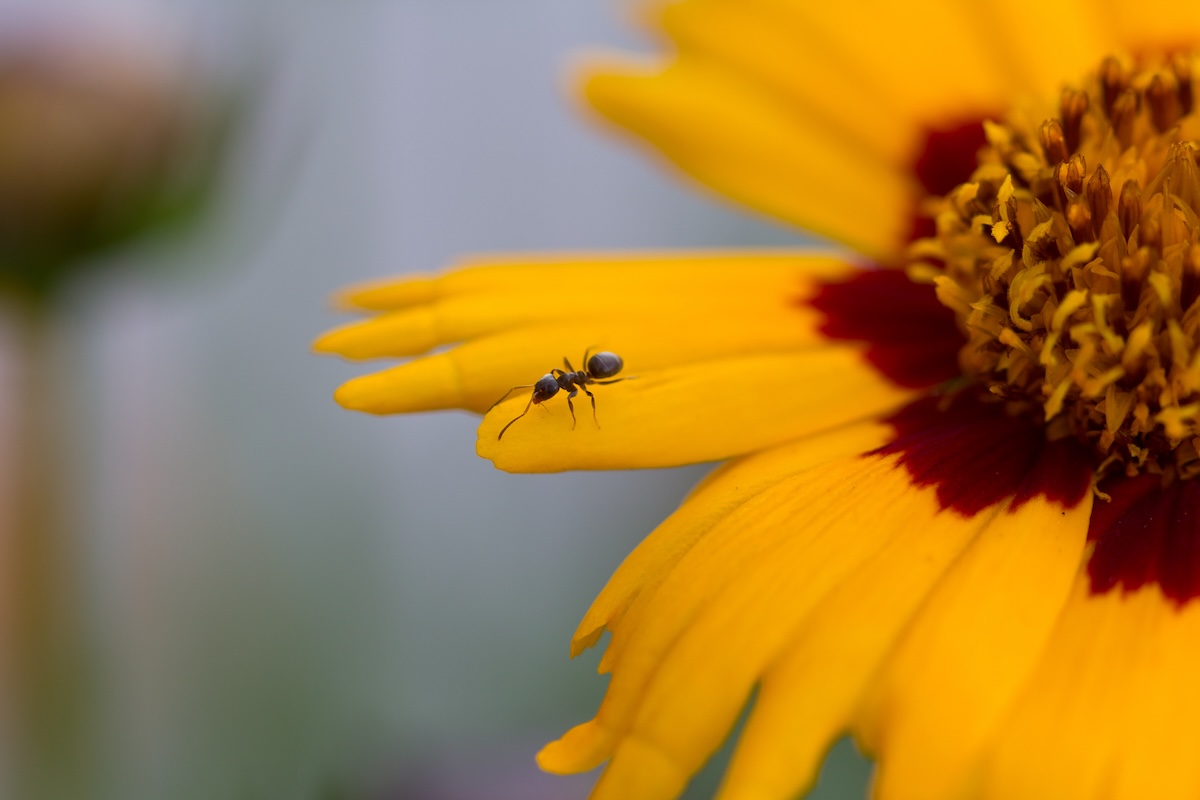

We may earn revenue from the products available on this page and participate in affiliate programs. Learn More ›
Home Advice You Can Trust
Tips, tricks & ideas for a better home and yard, delivered to your inbox daily.
Ants are a nuisance indoors and out, but these hardworking bugs contribute to ecosystems by helping clean up wildlife carcasses and preying on some bad insects. They also help in the garden by aerating soil, spreading wildflower seeds, and even protecting butterfly larvae.
However, ants also protect and “herd” bad bugs such as aphids to take advantage of their sweet honeydew, and those aphids, in turn, damage plants. Ants can also occasionally harm the roots of young plants and seedlings, and invade houses in search of sweets.
To cope with ants without killing them, try placing some of these strong-smelling plants, which may have ant-repelling properties, near areas where you’re trying to deter the pests. As a bonus, most of these plants also provide visual interest, and perhaps an edible contribution to your evening meal.
Anise (Pimpinella anisum)
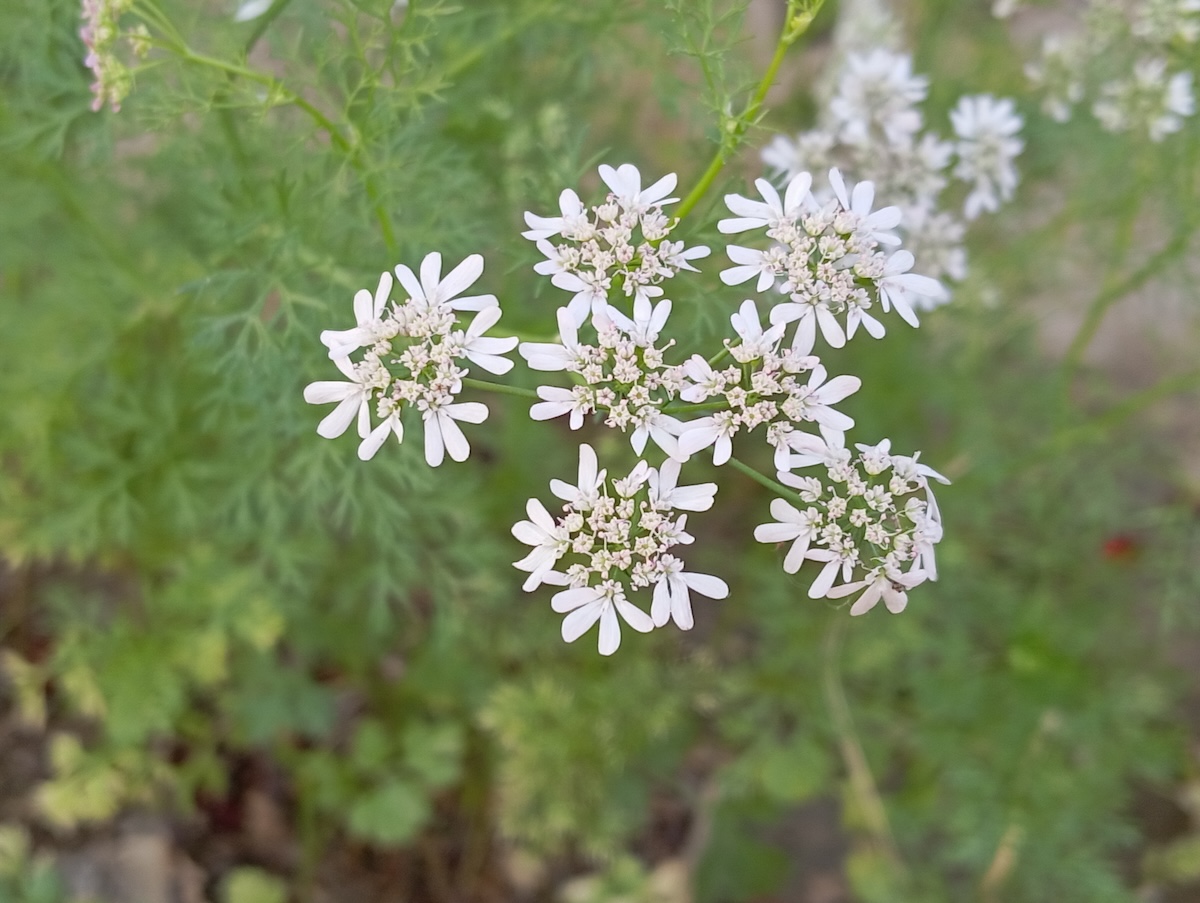
Photo: Mudassar Khan Khan via Getty Images
Size: 2 feet tall
USDA hardiness zone: 4 to 11
The enticing licorice scent of its seeds has been used to train foxhounds, but anise, or aniseed, doesn’t have the same allure for ants as it has for dogs. Sow anise seed in full sun and give it regular water. The plant prefers slightly alkaline soil and features lacy white blooms and ferny foliage. Even if anise doesn’t succeed in controlling ants, you can enjoy its foliage in salads and its seeds in breads and desserts. Harvest seeds from August to September.
Catnip (Nepeta cataria)
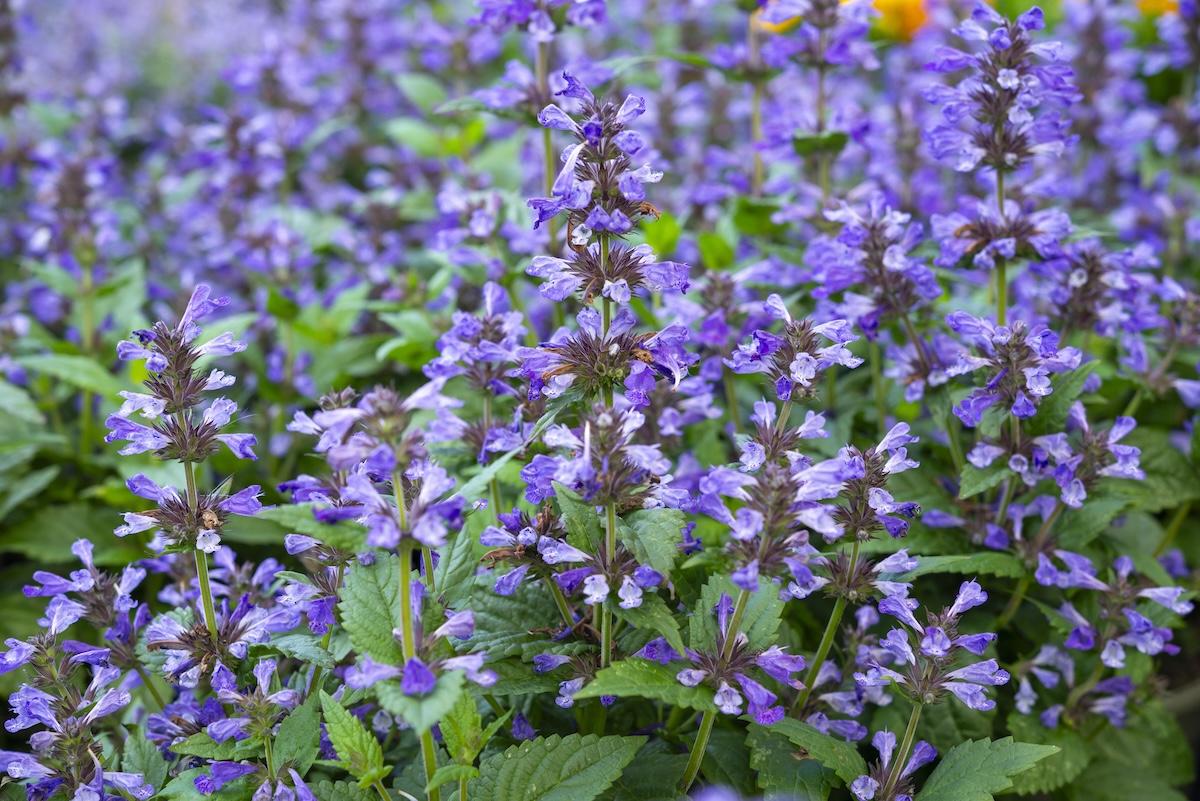
Photo: R. A. Kearton via Getty Images
Size: 3 feet tall
USDA hardiness zone: 3 to 9
Cats might love catnip, or catmint, but not so ants and other insect pests. Catmint grows to nearly 3 feet tall and around, with musky gray-green foliage and small white or purple flowers. It will attract neighborhood cats, but it also attracts bees, wasps, and butterflies, and provides food for some moth caterpillars. Drought-tolerant once established, catmint can grow in dry, poor soil. The fragrant plant spreads easily in well-draining soil and doubles as a culinary herb.
Garlic (Allium sativum)
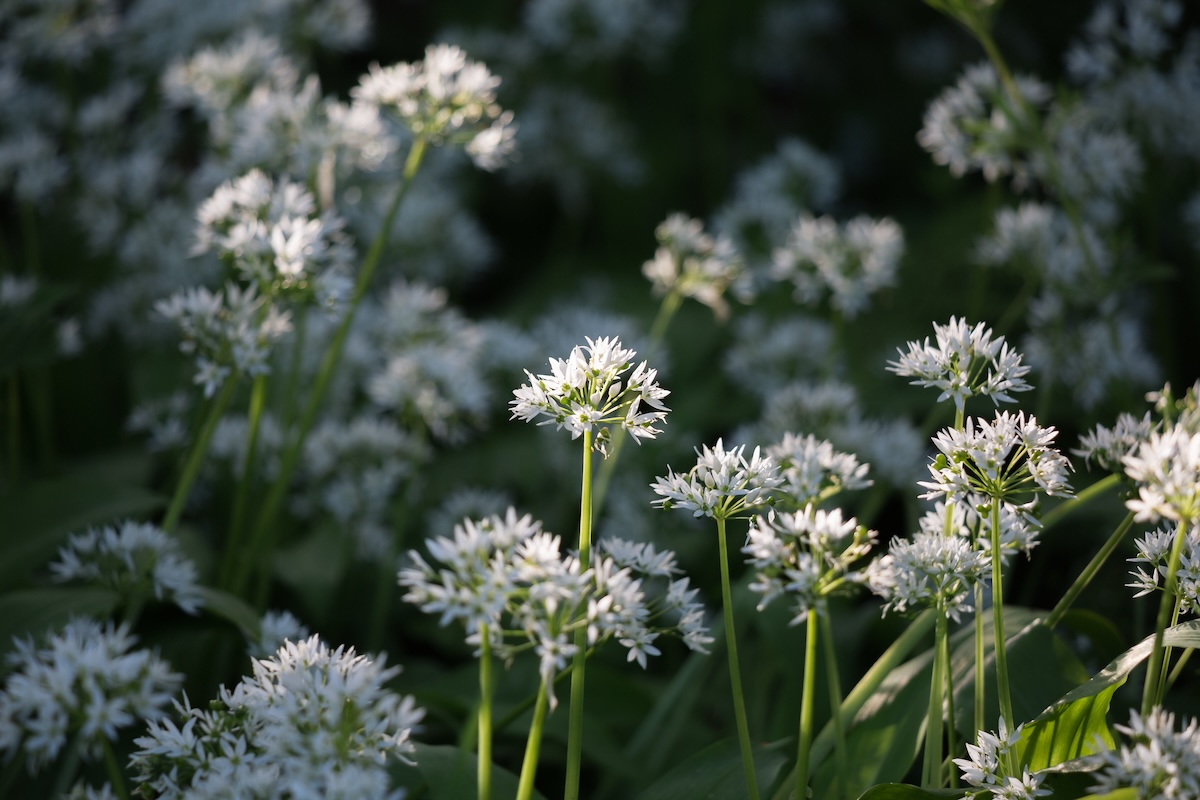
Photo: Anna Hedderly via Getty Images
Size: 1 to 1.5 feet tall
USDA hardiness zone: 3 to 8
Garlic’s strong scent can repel ants and other garden pests, like aphids and cabbage loopers. Its growth cycle differs from that of most annual herbs and vegetables, requiring more than 250 days from fall planting to harvest. Plant individual garlic cloves in mid- to late fall in well-draining soil with lots of organic matter. Just beware that garlic also might deter some beneficial pests, so consider this if planting it near flowers or edibles that need pollination.
Lavender (Lavandula spp.)

Photo: Elena Popova via Getty Images
Size: 1 to 3 feet tall
USDA hardiness zone: 5 to 9
This common ingredient in lotions and cleaning products is much more pleasant to people than it is to pests like ants and mosquitoes. One of the most rewarding plants you can grow, lavender can handle sun, heat, and drought once it’s established. About the only thing that can hinde growing lavender is overly wet roots. You can also cut the stalks for fragrant bundles and dried flower arrangements, or even for cooking.
Marigold (Tagetes spp.)
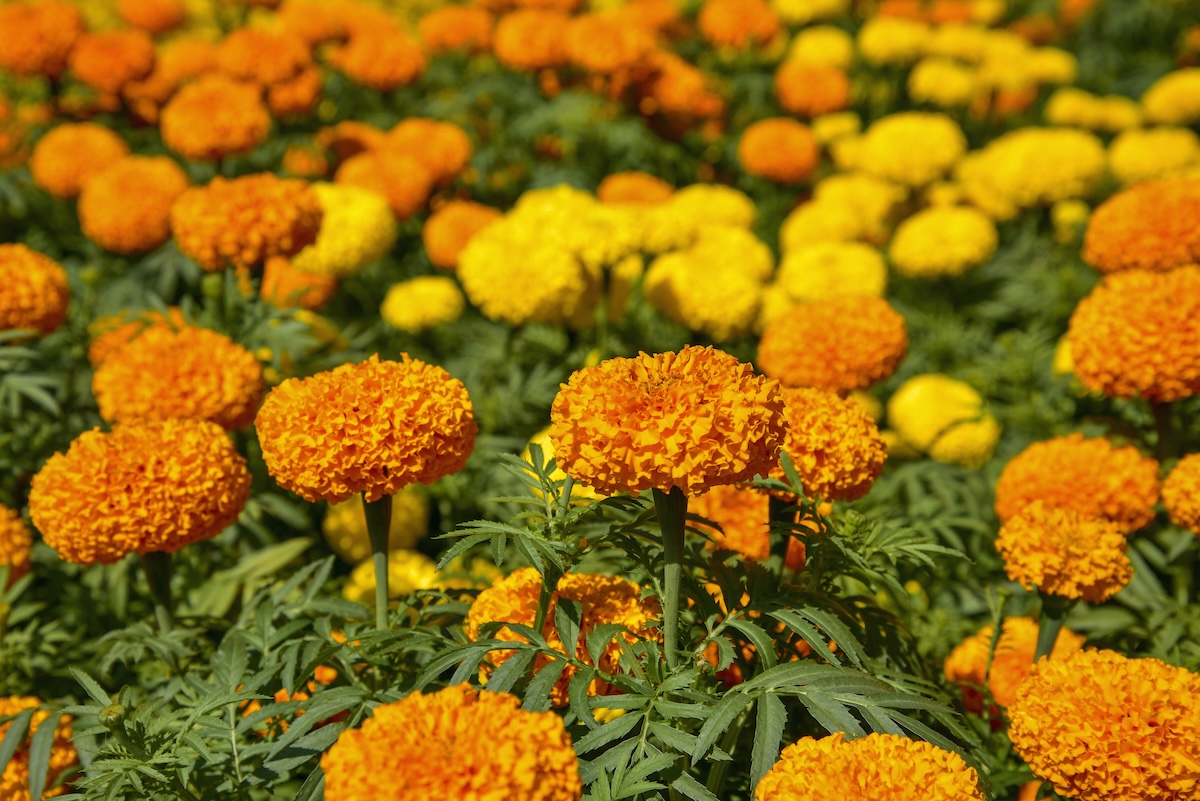
Photo: BUI PHU KHANH via Getty Images
Size: 1 to 4 feet tall
USDA hardiness zone: Annual in 2 to 9
Marigolds are favorites of vegetable gardeners who want some color and pest control around their edible plants. Although they deter some pests, the orange, yellow, or white flowers attract butterflies and songbirds. A few species of marigolds are perennial, but most grow just for the summer, at peak pest time. Marigolds grow best with at least 6 hours of sun per day and can handle any soil type, as long as it drains well. The plant’s cell sap can cause some skin irritation or burning.
Mint (Mentha spp.)
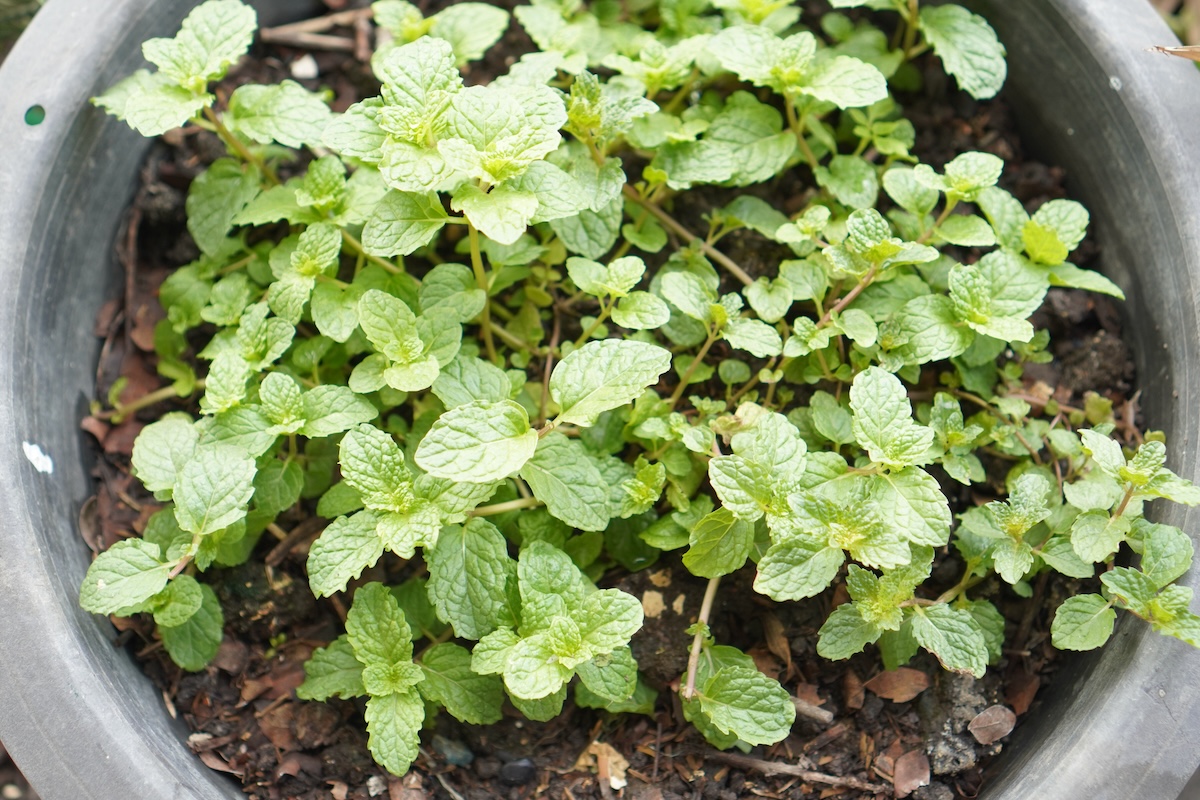
Photo: Penpak Ngamsathain via Getty Images
Size: 2 feet tall
USDA hardiness zone: 4 to 9
The minty-fresh scent people love also reportedly repulses ants, and either peppermint (Mentha x piperita) or spearmint (M. spicata) will do. Mint grows to 2 feet tall with unobtrusive lavender or pinkish white flowers, and will attract helpful pollinators like bees and butterflies. Harvest leaves to add a minty flavor to recipes or to garnish summer drinks. Keep in mind, though, that the plants can be highly invasive if not contained in a pot or isolated garden area.
Chrysanthemum (Chrysanthemum spp.)
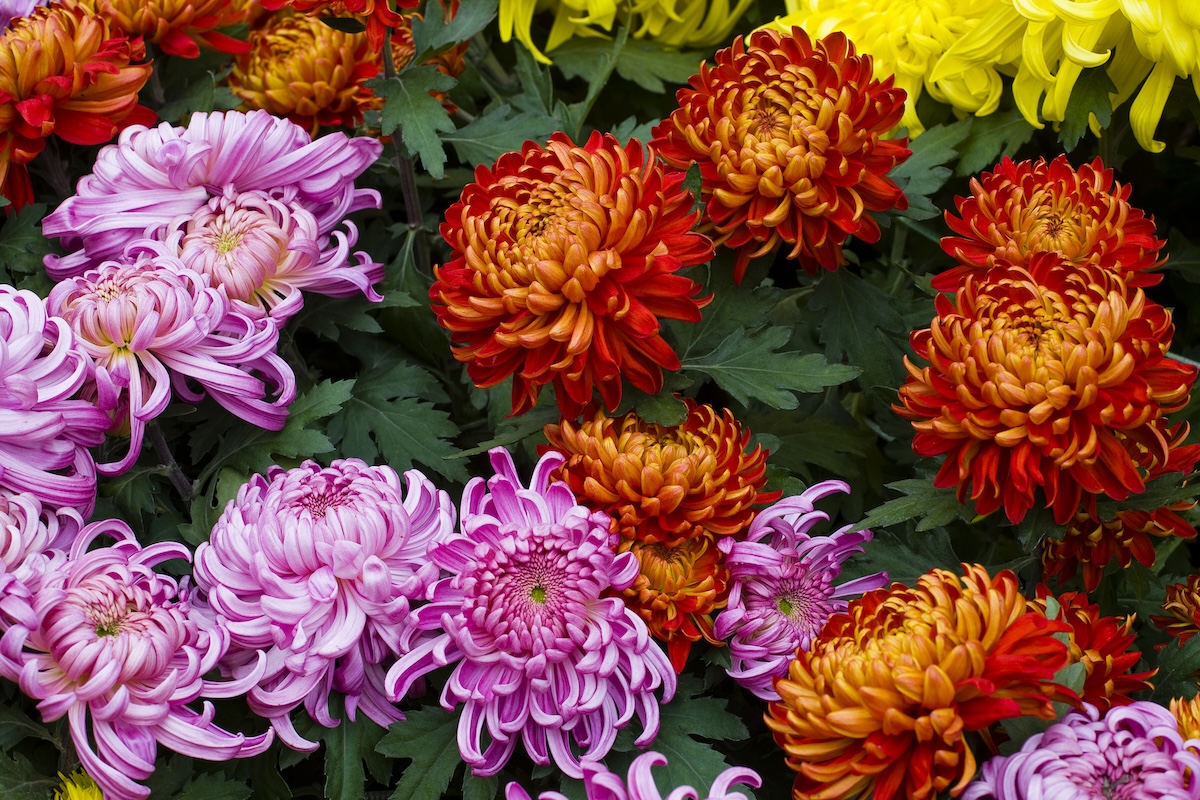
Photo: Best View Stock via Getty Images
Size: 2 to 4 feet tall
USDA hardiness zone: 3 to 9, or as an annual
Chrysanthemum flowers contain toxic pyrethrum, a natural pesticide that attacks ants’ central nervous systems and has been a pesticide ingredient since ancient Persian times. A member of the aster family, it shares pesticide-like characteristics with daisies. Mums boast colorful blooms in fall and are nice additions to late summer or early winter gardens and containers. They grow in full sun or part shade.
Pennyroyal (Mentha pulegium)

Photo: Valter Jacinto via Getty Images
Size: 4 inches to 2 feet tall
USDA hardiness zone: 6 to 9
Another member of the mint family, pennyroyal can also give ants the royal brush-off. Depending on the variety, it may grow only 4 inches tall or up to 2 feet tall and wide, with blooms ranging from white to pinkish-purple. In warmer regions, the drought-tolerant plant is evergreen for year-round interest. The dwarf type can handle some foot traffic. Just be aware that this non-native member of the mint family can be invasive, especially in wet areas, and is considered a moderate weed in California.
Rosemary (Salvia rosmarinus)

Photo: Anita Blaker via Getty Images
Size: 3 to 5 feet tall
USDA hardiness zone: 5 to 10, depending on variety
Another pleasantly fragrant herb, rosemary can deter ants around your garden by releasing a scent that ants dislike. It’s also a versatile herb to harvest as a cooking staple. The rosemary plant is evergreen, and when allowed to bloom, it attracts bees to the garden. Some varieties are cold-hardy down to USDA Zone 5 or 6, and the only way to really kill the plant in warm zones is by overwatering it.
Sage (Salvia officinalis)
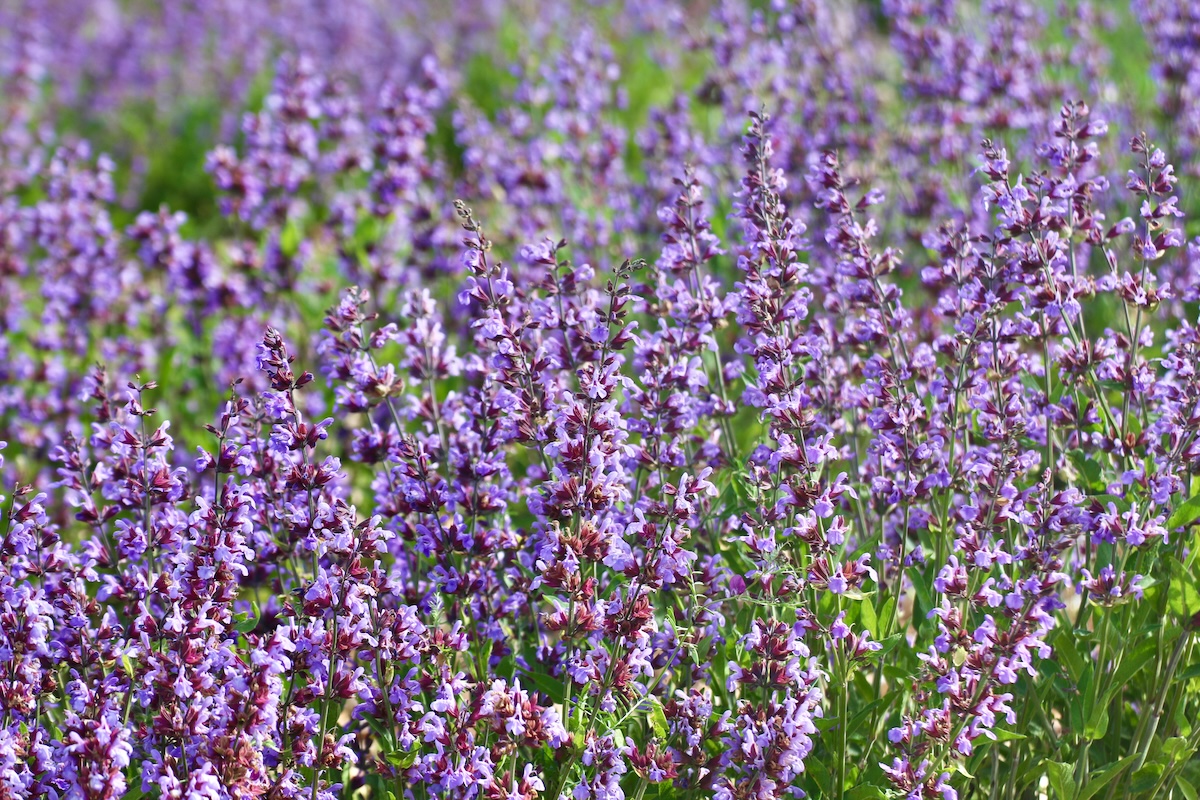
Photo: Caroline Gauvin via Getty Images
Size: 1 to 1.5 feet tall
USDA hardiness zone: 4 to 10
This earthy herb that’s so common in Thanksgiving stuffings can also reportedly repel ants. Sage contains chemicals that are toxic to ants, and it’s also been shown to deter cabbage worms and carrot rust flies. It’s a pretty plant with silvery foliage and mauve flowers. Be sure to sow sage seeds or transplant the herb into well-draining soil in a sunny garden location. Add fresh sage leaves to sauces and soups, or dry and grind them to store for winter.
Tansy (Tanacetum vulgare)
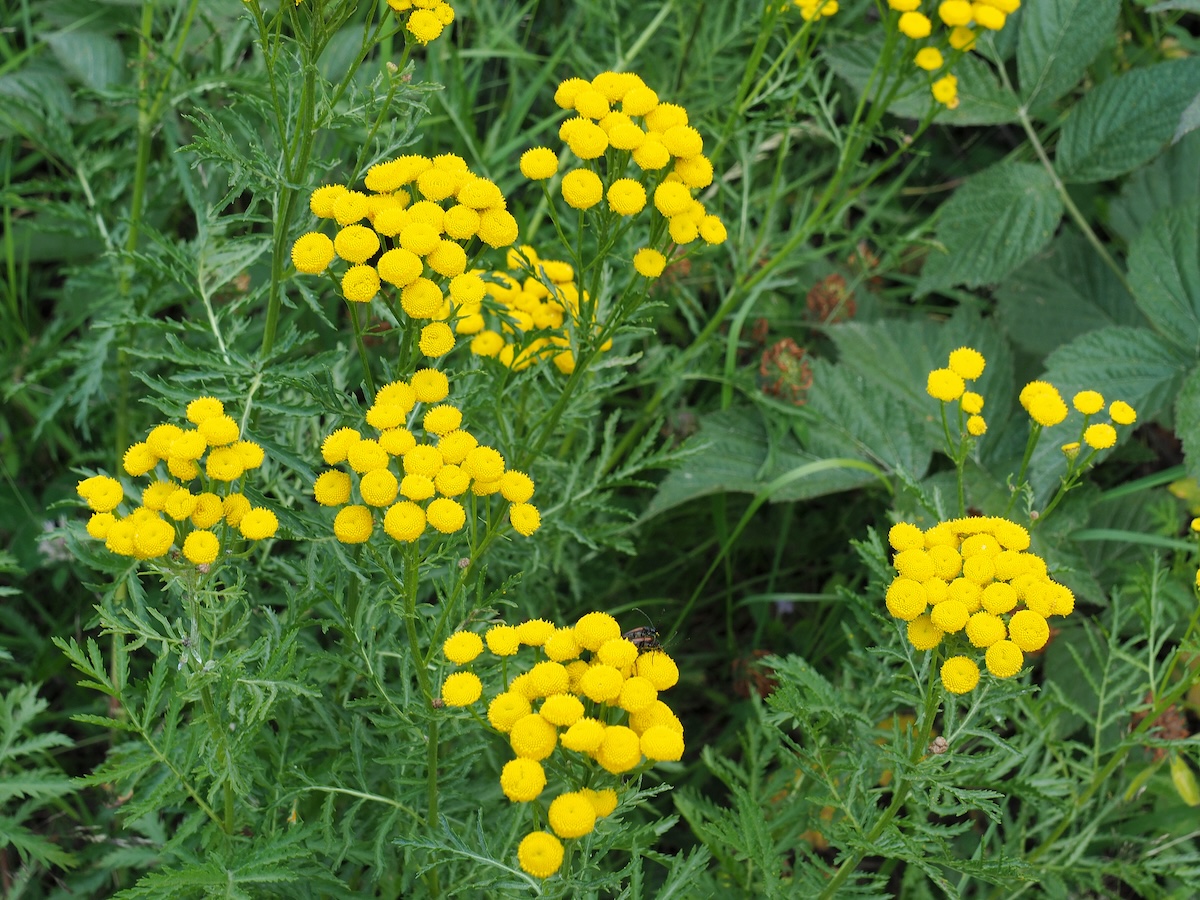
Photo: Federica Grassi via Getty Images
Size: 1 to 5 feet tall
USDA hardiness zone: 3 to 8
This close relative of mums is an aromatic perennial that produces bright yellow, button-shaped flowers and ferny foliage. Probably the most touted ant-repelling plant, common tansy has a strong, spicy fragrance that is said to drive away fleas as well as ants. However, the plant is invasive enough to be considered a noxious weed in some states. Be cautious: Although once used as a substitute for sage, tansy leaves can be toxic.
Thyme (Thymus vulgaris)

Photo: Yulia Naumenko via Getty Images
Size: 6 to 12 inches tall
USDA hardiness zone: 5 to 9
The potent flavor of culinary thyme can interfere with ants’ pheromone trails, disrupting their communication and food-finding. Harvest the tasty leaves for cooking and sprinkle some fresh or dried leaves indoors near ant trails. Although the plant can decline a bit in peak heat, it is fairly cold-hardy and can overwinter in some areas. Aside from its potential to disturb ants, the herb can serve as an attractive semi-evergreen ground cover and produce tiny lavender flowers that attract bees.

Meet the 2025 Tools of the Year
After months of scouring the market and putting products through their paces, we’ve named the best of the best in new tools. There’s something for everyone, from veteran pros to average Joes.